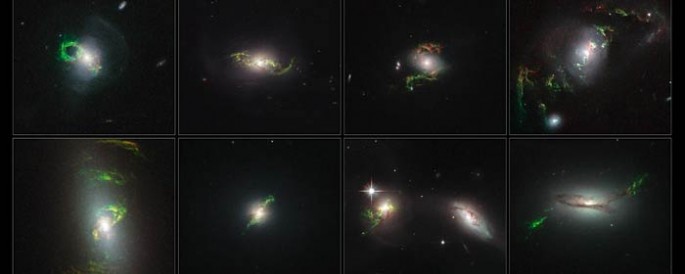NASA just revealed that the Hubble Space Telescope has captured some stunning images of a set of wispy, eerie, goblin green cosmic objects that were actually "ghosts" of quasars, once shimmering with life but faded away and died out.
These ethereal, cosmic objects were captured by Hubble and are actually eight separate galaxies that were once active and illuminating for a short time that is caused by ultraviolet radiation blasts from quasars.
Quasars are powered by gigantic black holes found in galactic cores that emit massive amounts of energy as they consume cosmic gas and dust from their environment. According to Bill Keel from the University of Alabama, these quasars are still not bright enough that would be a by-product of a recent cosmic activity: this is a record of something that occured in the past.
However, the glowing filaments in the quasars are emitting energy once more and are changing states which is not supposed to happen.
Keel explains why this is possible, since quasars are orbiting with black holes, this in effect could change the quasar's brightness and luminosity when they orbit one another, acting like a switch.
To date, these invisible filaments are now glowing green as captured by Hubble, via a process called photoionization where oxygen atoms found inside the filaments absorb this quasar energy as they emit light once more, gradually, for another thousand of years.
Researchers also believe that the quasars only became visible because it has taken them tens of thousands of years to absorb energy and reach an ionization process of the gas filaments.
This means that even if the quasars are "turned off" by their orbiting black holes, the oxygen clouds are glowing continuously for a long time where they will also eventually fade.
These green filaments are believed to be gas stretched out by gravitational forces from the merging of two galaxies where they are now orbiting their host galaxies. Since they are far from the center core of their host galaxies, the green filaments apparently span more than ten thousand light years says NASA.




























